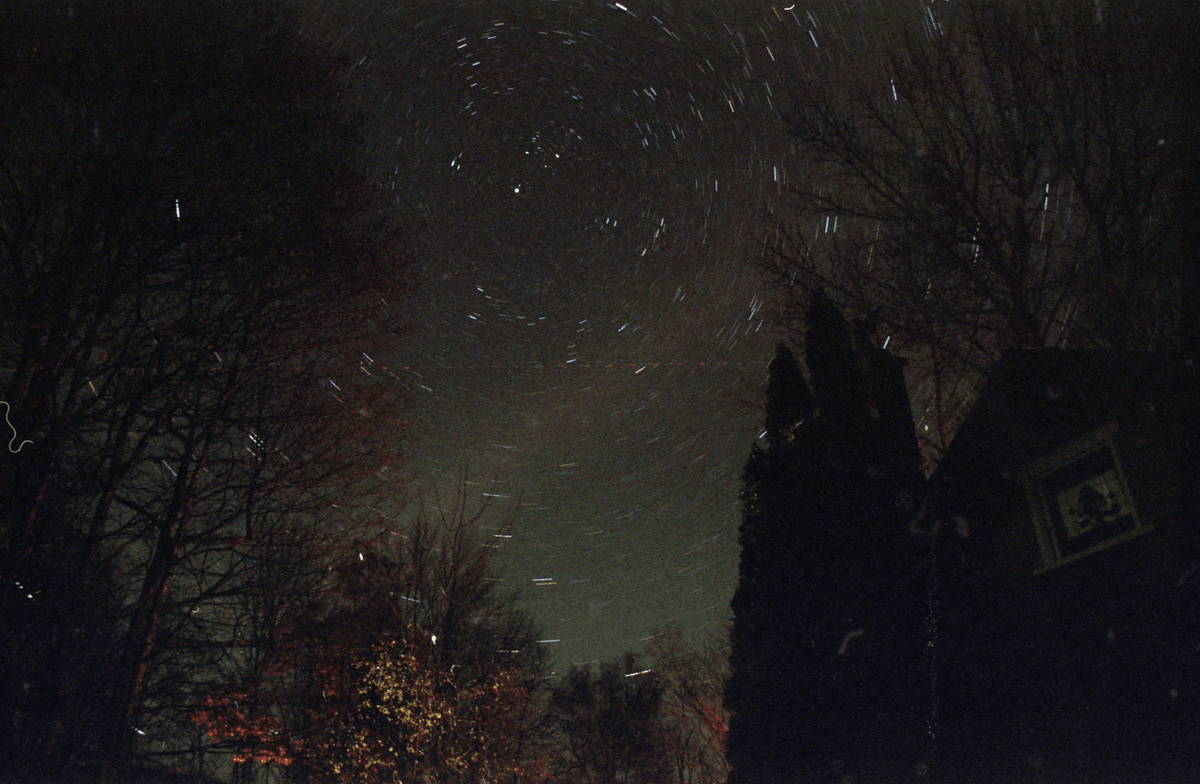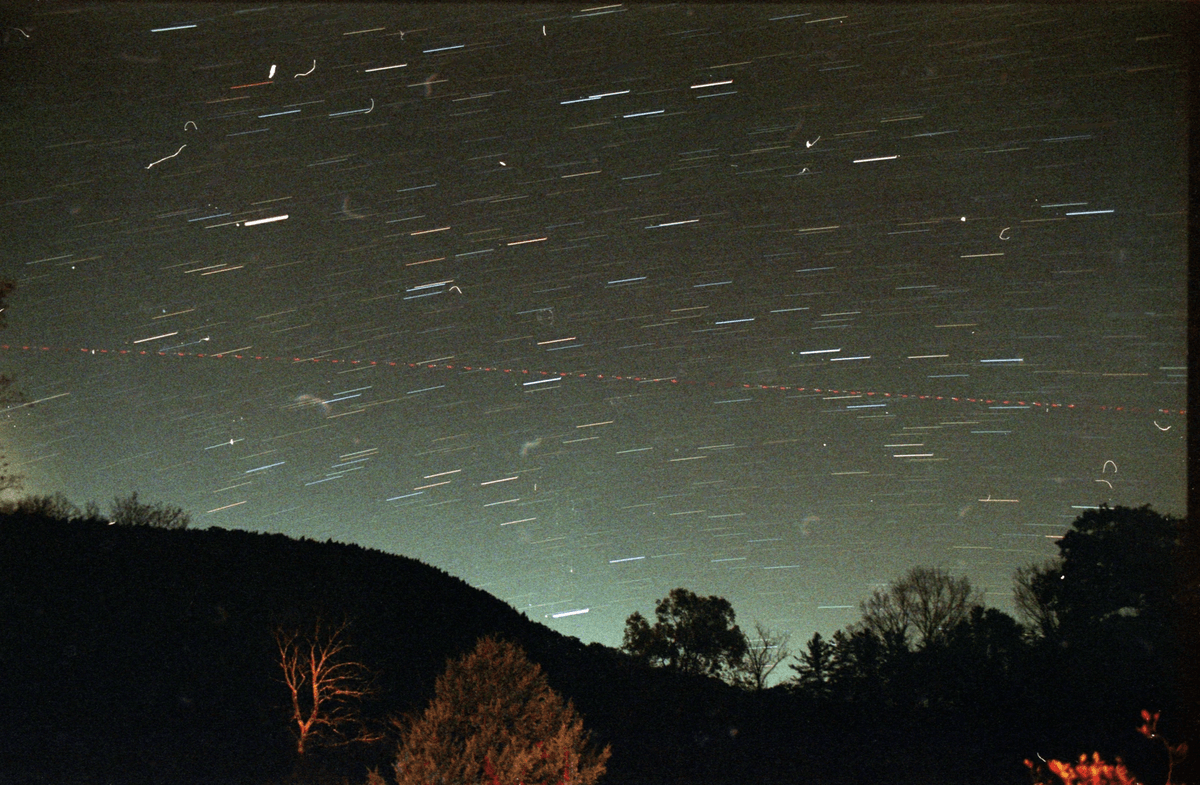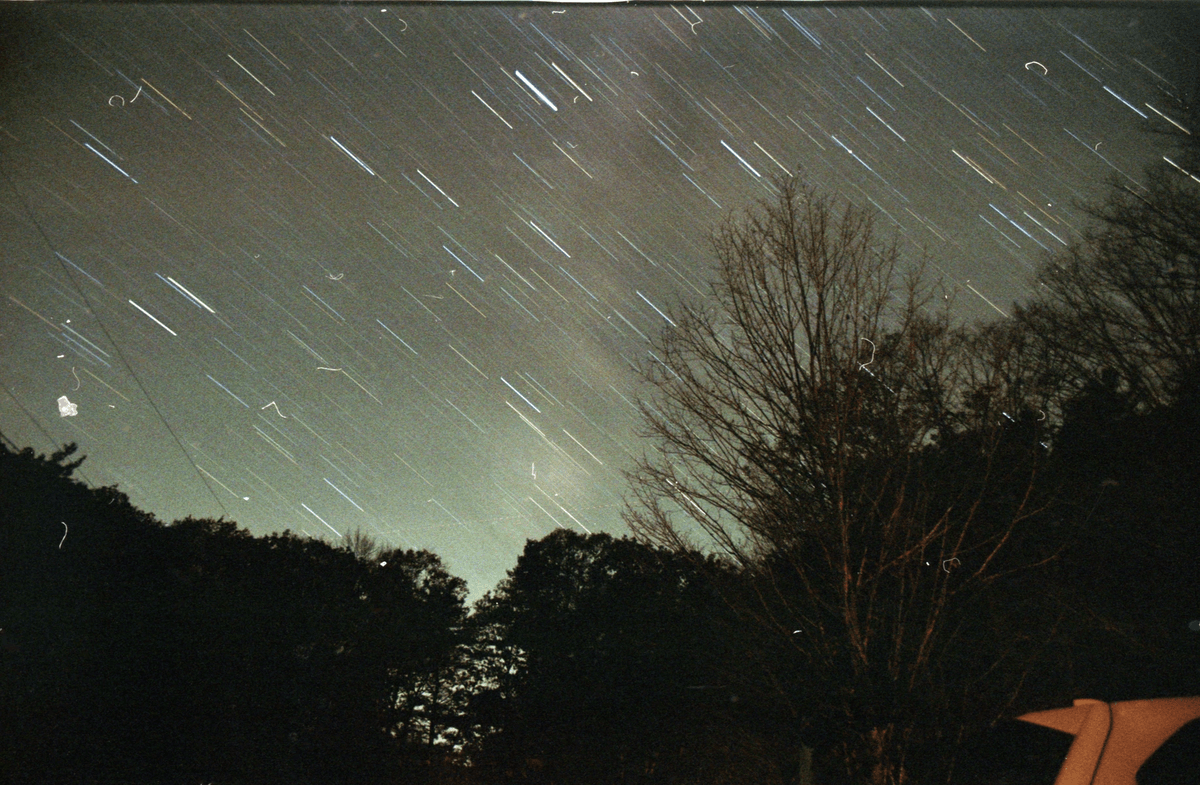Star trails are a result of stars appearing to move due to the Earth's rotation. Stars change their position every 15-30 seconds, so a short exposure of 30 seconds with a high ISO and a wide aperature lens should result in a still photo of the night sky. Star tracker tripods are specialized tripods that can be used to counteract star motion, but since I only have a regular tripod I decided to try capturing star trails. Most of what I've read online has said that you need exposure times of 30 minutes to 1 hour to see good star trails. I decided to try shorter exposure times because I had found success last year with an exposure time of 8 minutes.
One thing to consider before shooting is the type of camera you use. I used a Canon A1 which uses an electronic shutter that requires a constant feed of electricity to keep the shutter open. This means that keeping the shutter open will drain your battery and that if the power is disrupted the shutter will close. Since it was close to freezing that night, the battery shrunk inside my camera which caused the camera to lose power and prevented me from taking exposures longer than 15 minutes. Next time I will try to use a fully mechanical camera like my Nikkormat FTN which has a fully mechanical shutter.
For my first shot I pointed my camera at Polaris and took an 8 minute exposure. The red dotted line crossing my picture is likely a plane.

Canon A1, 28mm, f5.6, 8 minutes, Kodak Ultramax 400

Canon A1, 28mm, f5.6, 12 minutes, Kodak Ultramax 400

Canon A1, 28mm, f5.6, 12 minutes, Kodak Ultramax 400